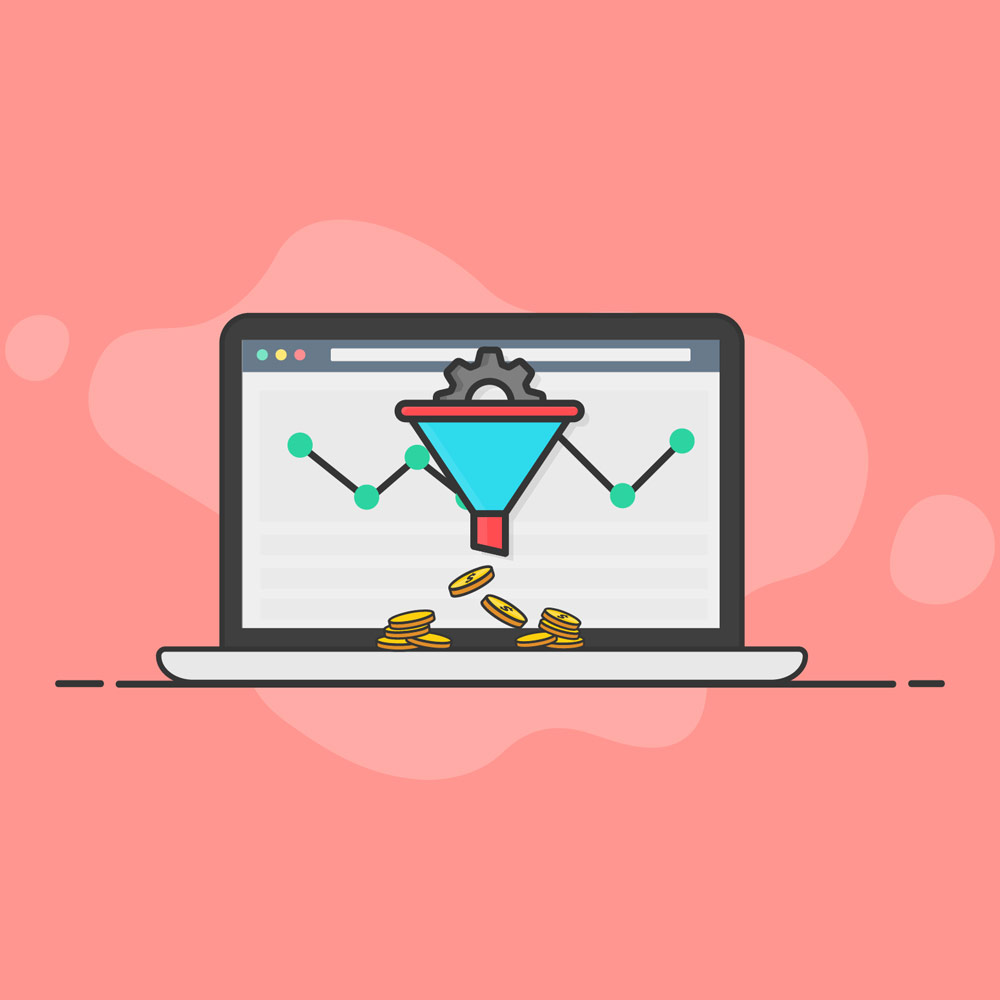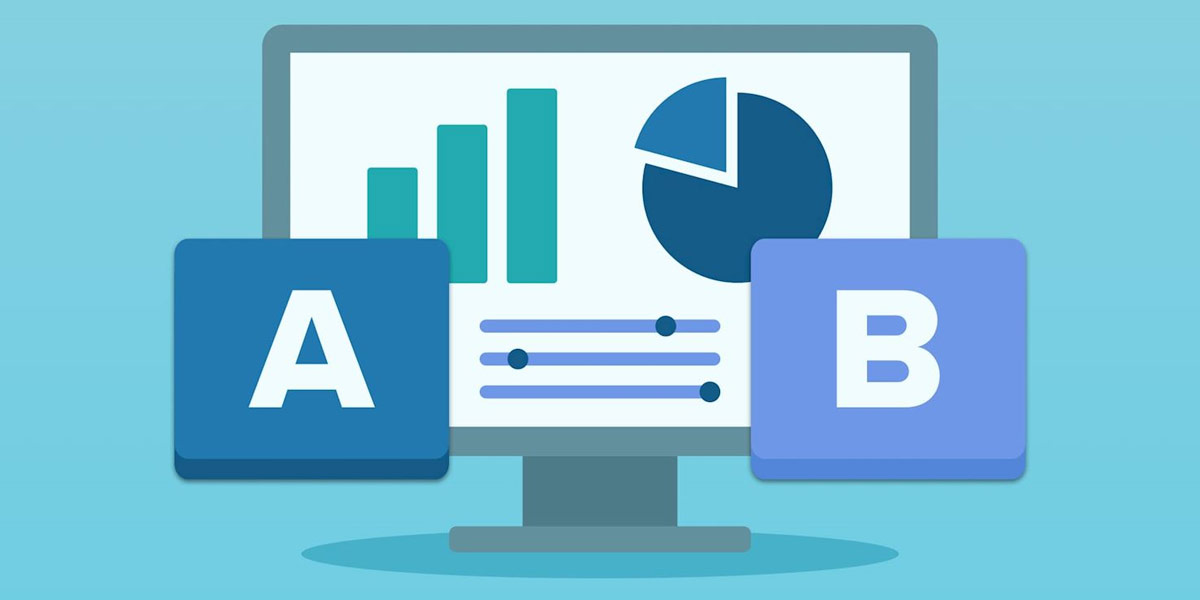What is Conversion Rate Optimization (CRO)?

Are you looking for ways to improve your website’s effectiveness? Do you want to increase the number of visitors that convert into customers or clients? If so, then you need to focus on conversion rate optimization (CRO).
CRO is the process of optimizing your website to increase the percentage of visitors who complete a desired action, such as making a purchase or filling out a form. In this article, we’ll explore the benefits of CRO and provide you with practical tips to help you get started.
What is Conversion Rate Optimization?
CRO is the process of improving your website’s performance by optimizing its design, content, and user experience to increase the percentage of visitors who complete a desired action. This action could be anything from purchasing to subscribing to a newsletter, filling out a form, or downloading a white paper.
CRO involves understanding your audience, analyzing your website’s data, identifying areas for improvement, and testing different strategies to see what works best. It’s a continuous process of experimentation and refinement that can help you achieve your business goals and increase your revenue.

What is Conversion Rate Optimization?
Why is Conversion Rate Optimization Important?
CRO is important because it can help you achieve your business goals by increasing the effectiveness of your website. By optimizing your website for conversions, you can:
- Increase the number of leads, sales, and signups that you generate
- Improve the quality of your leads by attracting visitors who are more likely to convert
- Reduce your customer acquisition costs by making your website more efficient
- Improve your customer retention rates by providing a better user experience
- Stay ahead of your competitors by continuously improving your website’s performance
Understanding Your Website Visitors
The first step in CRO is understanding your website and visitors. Who are they? What are their goals? What are their pain points? What motivates them to take action?
To answer these questions, you can use a variety of tools, including:
- Website analytics tools like Google Analytics or Adobe Analytics
- Heat mapping tools like Crazy Egg or Hotjar
- User testing tools like UserTesting or UsabilityHub
- Survey tools like SurveyMonkey or Qualtrics
By using these tools, you can gather data about your visitors’ behaviour, preferences, and attitudes. This data can help you identify areas for improvement and create a more effective user experience.

Understanding Your Website Visitors
Analyzing Your Website’s Data
Once you have gathered data about your visitors, you can analyze it to identify areas for improvement. This analysis should include:
- Identifying your website’s top-performing pages and content
- Identifying your website’s top traffic sources and referral sites
- Identifying your website’s most common user paths and conversion funnels
- Analyzing your website’s bounce rates, exit rates, and conversion rates
- Identifying your website’s most common user objections and pain points
By analyzing this data, you can identify areas for improvement and create a conversion optimization plan.
Creating a Conversion Optimization Plan
Your conversion optimization plan should outline the steps you will take to improve your website’s conversion rates. This plan should include:
- Setting clear goals and objectives for your CRO efforts
- Identifying the key performance indicators (KPIs) that you will use to measure success
- Prioritizing the areas of your website that need the most improvement
- Defining the strategies and tactics you will use to optimize each area
- Creating a timeline and budget for your CRO efforts
- Assigning responsibilities to team members or outside experts
By creating a conversion optimization plan, you can stay focused and organized as you work to improve your website’s performance.

Creating a Conversion Optimization Plan
Improving Your Website’s User Experience
One of the most important factors in CRO is user experience (UX). Your website should be easy to navigate, visually appealing, and provide visitors with the information they need to make a decision.
To improve your website’s UX, consider the following:
- Simplify your website’s design and layout
- Use clear and concise language
- Make sure your website is mobile-responsive
- Optimize your website’s loading speed
- Use high-quality images and videos
- Make it easy for visitors to find what they’re looking for
- Use clear calls-to-action (CTAs)
By improving your website’s UX, you can make it more likely that visitors will take the desired action.
Creating High-Converting Landing Pages
Another important aspect of CRO is creating high-converting landing pages. A landing page is a standalone page designed to convert visitors into leads or customers.
To create a high-converting landing page, consider the following:
- Use a clear headline and subheadline that communicates the page’s purpose
- Use persuasive copy that highlights the benefits of taking action
- Use high-quality images or videos that reinforce the message
- Use social proof, such as customer testimonials or case studies
- Use a clear and prominent CTA that stands out from the rest of the page
By creating high-converting landing pages, you can increase the likelihood that visitors will take the desired action.

Creating High-Converting Landing Pages
Testing and Experimenting with Different Strategies
One of the keys to a successful CRO is testing and experimenting with different strategies. A/B testing is a common method used to compare two versions of a web page to see which one performs better.
To conduct an A/B test, you would create two versions of a page, with one variation (such as a different headline or CTA) on the second version. You would then randomly split your traffic between the two versions and measure the results.
Other types of tests you could conduct include:
| Testing Methods | Description |
|---|---|
| Multivariate testing | Testing multiple variations of different elements on a single page |
| Split testing | Testing two different versions of an entire website or a specific page |
| User testing | Observing users as they interact with your website to identify pain points and areas for improvement |
By testing and experimenting with different strategies, you can identify the tactics that work best for your audience.
Implementing CRO Tools and Techniques
There are many tools and techniques that you can use to implement CRO. Some of the most common include:
| Tools | Description |
|---|---|
| Heat mapping tools | These tools help you see where visitors are clicking and scrolling on your website |
| A/B testing tools | These tools help you test different versions of a page to see which one performs better |
| User testing tools | These tools help you observe users as they interact with your website to identify pain points and areas for improvement |
| Website analytics tools | These tools help you track your website’s performance and identify areas for improvement |

Implementing CRO Tools and Techniques
By implementing these tools and techniques, you can optimize your website for conversions and improve its overall effectiveness.
Measuring and Analyzing Your Results
Once you have implemented your CRO plan, it’s important to measure and analyze your results. This will help you determine if your efforts were successful and identify areas for further improvement.
Some of the metrics you should track include:
| Metrics | Description |
|---|---|
| Conversion rate | The percentage of visitors who complete the desired action |
| Bounce rate | The percentage of visitors who leave your website after viewing only one page |
| Time on page | How long do visitors spend on each page of your website |
| Click-through rate (CTR) | The percentage of visitors who click on a link or button |
| Exit rate | The percentage of visitors who leave your website after viewing a specific page |
By analyzing these metrics, you can gain insights into how visitors are interacting with your website and identify areas for improvement.
Common Conversion Optimization Mistakes to Avoid
While conversion rate optimization can be a powerful tool for improving your website’s performance, several common mistakes can undermine your efforts. Here are some of the most important mistakes to avoid:
Focusing too much on traffic
While traffic is certainly important, it’s not the only factor that affects your conversion rate. If you focus too much on driving traffic to your website without paying attention to user experience, messaging, and other conversion factors, you may end up with a high bounce rate and a low conversion rate.
Not prioritizing user experience
User experience is a critical factor in conversion rate optimization. If your website is slow, confusing, or difficult to navigate, visitors are unlikely to stick around and complete a desired action. Make sure to prioritize user experience by optimizing page speed, creating intuitive navigation, and making sure your website is mobile-friendly.
Neglecting A/B testing
A/B testing is a powerful tool for identifying the most effective conversion strategies. By testing different versions of your website or landing page, you can gather data on what works and what doesn’t, and optimize your website accordingly. Neglecting A/B testing can lead to missed opportunities for optimization and lower conversion rates.
Ignoring data and analytics
Data and analytics are essential for effective conversion rate optimization. If you’re not measuring and analyzing your website’s performance, you won’t be able to identify areas for improvement or track the impact of your optimization efforts. Make sure to use analytics tools like Google Analytics to gather data on user behaviour and track key metrics like conversion rate, bounce rate, and time on page.
Using too many distractions
While it’s important to provide visitors with information and options, using too many distractions can hurt your conversion rate. If you overload visitors with too many buttons, links, or calls to action, they may become overwhelmed and leave your website without completing a desired action. Make sure to use a clear, focused design that guides visitors toward your desired conversion goal.
By avoiding these common mistakes and following the best practices outlined in this article, you can optimize your website for conversions and achieve your business goals.

Common Conversion Optimization Mistakes to Avoid
Conclusion
Conversion rate optimization is a critical component of any digital marketing strategy. By optimizing your website for conversions, you can increase your revenue, grow your customer base, and achieve your business goals.
To get started with conversion rate optimization, make sure to:
- Understand your target audience and their needs and motivations
- Create a clear and compelling value proposition
- Optimize your website’s design, messaging, and user experience
- Use data and analytics to track performance and identify areas for improvement
- Test different strategies and optimize based on results
By following these best practices and avoiding common mistakes, you can create a website that effectively converts visitors into customers and drives your business forward.
FAQs
What is conversion rate optimization (CRO)?
Conversion rate optimization (CRO) is the process of optimizing your website or landing pages to increase the percentage of visitors who take a desired action, such as making a purchase or filling out a contact form. The goal of CRO is to improve the overall user experience and make it easier for visitors to complete the desired action.
Why is conversion rate optimization important for businesses?
Conversion rate optimization is important for businesses because it helps them achieve their goals, such as increasing revenue or generating leads. By improving the conversion rate, businesses can generate more value from their existing website traffic without having to increase their advertising spend.
How does conversion rate optimization work?
Conversion rate optimization works by identifying areas of a website or landing page that can be improved to make it easier for visitors to take the desired action. This can involve changes to the design, messaging, or user experience. The changes are typically tested using A/B testing or multivariate testing to determine which variation performs best.
What are some common techniques used in conversion rate optimization?
Some common techniques used in conversion rate optimization include improving the website’s design and layout, simplifying the checkout process, using clear and compelling calls to action, and optimizing page load times.
What are some best practices for conversion rate optimization?
Some best practices for conversion rate optimization include understanding your target audience, creating a clear and compelling value proposition, using data and analytics to inform decisions, testing different strategies and optimizing based on results, and continually refining and improving your approach.
What are the benefits of conversion rate optimization?
The benefits of conversion rate optimization include increased revenue, improved customer engagement and satisfaction, better user experience, increased brand loyalty, and a better understanding of your target audience.
What are some tools used in conversion rate optimization?
Some tools used in conversion rate optimization include Google Analytics, Optimizely, Crazy Egg, Hotjar, and VWO.
How can I measure the success of my conversion rate optimization efforts?
You can measure the success of your conversion rate optimization efforts by tracking metrics such as conversion rate, bounce rate, time on site, and revenue generated. You can use tools like Google Analytics to track these metrics and monitor the performance of your website over time.
How can I create a CRO strategy for my business?
To create a CRO strategy for your business, you should start by defining your goals and identifying your target audience. You should also conduct a thorough analysis of your website’s performance and identify areas for improvement. From there, you can develop a testing plan and start implementing changes based on data and results.
How can I optimize my website for better conversions?
To optimize your website for better conversions, you should focus on improving the user experience, simplifying the checkout process, using clear and compelling calls to action, and testing different strategies and approaches to see what works best.
What is A/B testing and how can it be used in conversion rate optimization?
A/B testing is a technique used in conversion rate optimization that involves testing two versions of a web page or landing page to determine which performs better. A/B testing can be used to test different design elements, messaging calls to action, and other factors that can impact conversion rates.
How can I improve my website’s user experience to increase conversions?
To improve your website’s user experience, you should focus on factors such as page load times, navigation, layout, and readability. You should also make sure that your website is mobile-friendly and easy to use on different devices.
What are some common mistakes to avoid in conversion rate optimization?
While there are many best practices for conversion rate optimization, there are also some common mistakes to avoid. Here are a few to keep in mind:
| Mistake | Description |
|---|---|
| Not testing | Conversion rate optimization is all about testing and experimentation. Failing to test your changes can result in missed opportunities for optimization. |
| Focusing on the wrong metrics | It’s important to measure the right metrics to make informed optimization decisions. Don’t just focus on vanity metrics like page views or social media followers; instead, focus on metrics that directly impact conversions, such as click-through rates or conversion rates. |
| Overcomplicating your design | Simplicity is key in conversion rate optimization. Avoid cluttered designs, too many options, or confusing navigation. Keep your design clean and focused on guiding users towards the desired action. |
| Not considering mobile users | With more and more users browsing on mobile devices, it’s crucial to optimize your site for mobile. Make sure your site is mobile-responsive and easy to use on smaller screens. |
| Assuming you know what works | Don’t assume that you know what will work best for your site without testing it. Every site is different, and what works for one may not work for another. Test your assumptions and let the data guide your decisions. |
How can I optimize my landing pages for better conversions?
Landing pages are crucial for driving conversions, as they are often the first impression a user has of your site. Here are some tips for optimizing your landing pages:
| Tip | Description |
|---|---|
| Keep it simple | Your landing page should be clean, simple, and focused on the desired action. Avoid cluttered designs or too much text, as this can be overwhelming to users. |
| Make the desired action clear | Be very clear about what you want users to do on your landing page. Use clear calls to action and make sure they are prominently displayed. |
| Use high-quality images | High-quality, relevant images can help to engage users and communicate your message more effectively. |
| Make it mobile-responsive | With more and more users browsing on mobile devices, it’s crucial to optimize your landing page for mobile. Make sure it is easy to use on smaller screens and loads quickly. |
| Test, test, test | As with any element of conversion rate optimization, testing is key. Try different headlines, images, calls-to-action, and layouts to see what works best for your site. |

